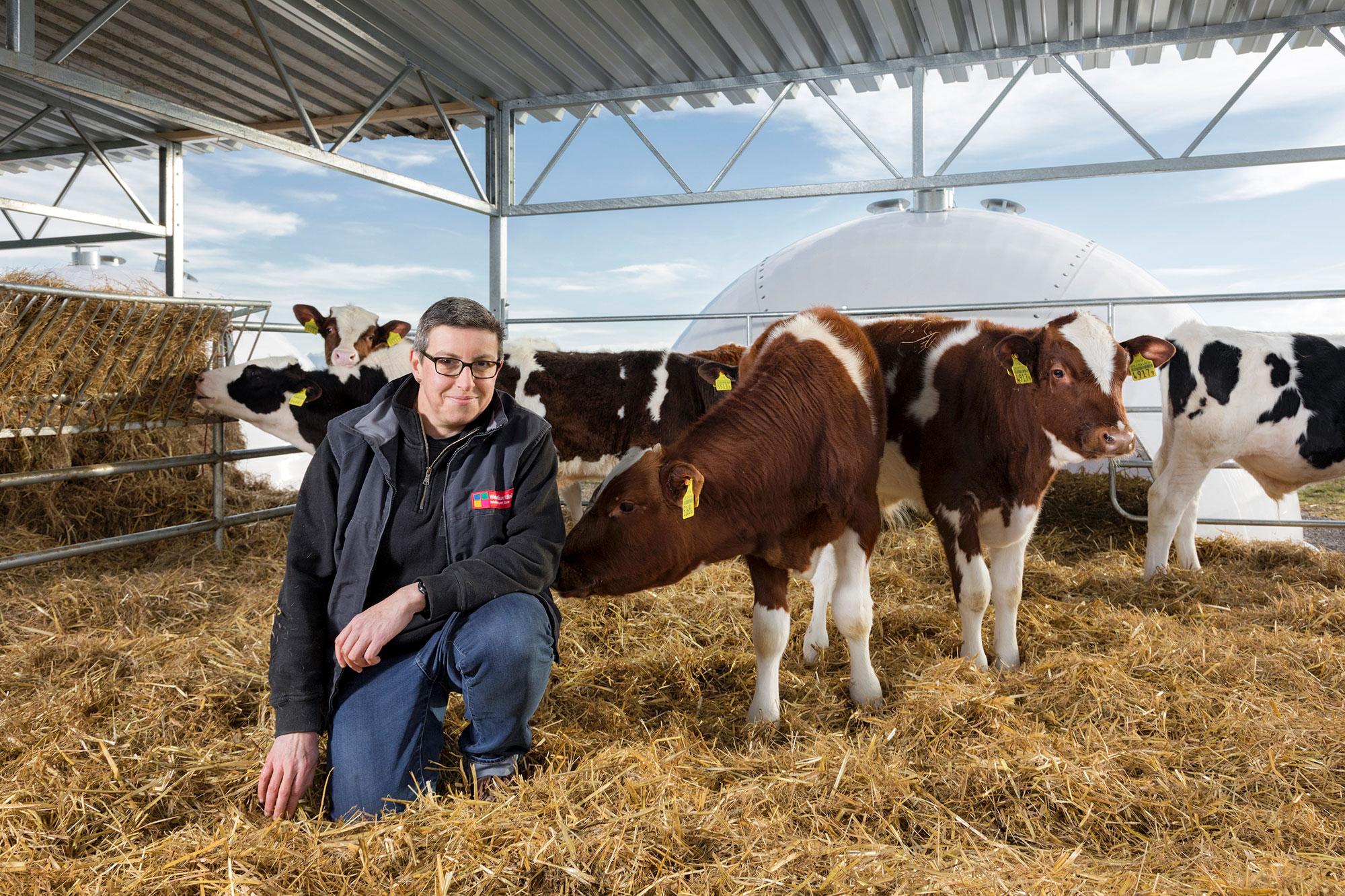Veal calf fattening – it can work with less antibiotic use

New way of fattening calves: less antibiotics, better animal welfare – and economically competitive.
Portrait / project description (completed research project)
Large amounts of antibiotics are used in veal fattening in Switzerland – although the sector has succeeded in reducing their use over the past few years. However, many farms are reluctant to implement further measures as it is often unclear how these will impact their economic efficiency. Researchers at the University of Bern have now developed a fattening system that works with a much lower level of antibiotic use without jeopardising the economic efficiency of the farm.
The first weeks are crucial
Investigating the so-called “outdoor calf” system, a study team headed by Mireille Meylan at the Vetsuisse Faculty of the University of Bern started by finding out why fattening calves develop signs of disease that make the use of antibiotics necessary. The main focus was on pneumonia, the main reason for antibiotic treatments in veal fattening operations. “Especially in the first weeks of their lives, young animals are exposed to a high risk of infection,” explains Meylan. When they are then mixed with other calves when transferred from the birth herd to the fattening farm and are then introduced into even bigger groups on arrival, this often causes pathogens to spread very fast.”
This is why farmers taking part in the new system only buy their calves from nearby farms, and animals from different farms are not mixed thanks to the short transportation distances. During the first few weeks after arrival, the animals are housed outdoors in individual igloos and vaccinated against pneumonia. Only after this quarantine period are they moved to small groups of up to ten calves, where they spend the remainder of their fattening time (four months on average). During this time, the calves always stay outdoors, where they have constant access to a group igloo and a covered paddock with deep straw bedding.
Healthier animals
The investigation was conducted over 12-month periods at each of 19 calf-fattening farms in the cantons of Bern, Fribourg, Lucerne, Aargau and Solothurn to determine whether the new system actually produces healthier animals while reducing the use of antibiotics. Each farm was visited at least once a month by the scientists from the University of Bern, who assessed the calves’ health and well-being. They also followed the same protocols at 19 control farms in the same region that observe the production guidelines of IP-SUISSE, a label with high animal welfare requirements. The trial showed that the “outdoor veal calves” not only presented with fewer respiratory and digestive diseases, but that premature deaths were also much less frequent.
Five times less antibiotic use
With the help of the farmers, the researchers also meticulously recorded antibiotic use and observed significant differences: While every other calf in the control farms required antibiotics in the course of their lives, this only applied to less than one in six “outdoor veal calves”. And the difference was even greater for the average frequency of treatment per calf: five times fewer treatment days per calf were recorded on farms with the new system than on the control farms.
In a follow-up study, Mireille Meylan and her team also analysed the economic aspects of the “outdoor veal calf” method. To this end, they calculated the specific per-calf expenditure incurred by the farm – from the purchase price via the required labour to animal feed costs. The “outdoor calf” fattening system proved to be largely on a par with production according to the IP-SUISSE label with regard to cost effectiveness. This calculation is based on the assumption that farmers using the “outdoor veal calf” method would receive direct payments from the government (or equivalent subsidies), as is the case for other IP-SUISSE farms. The farmers should be eligible for such payments since their animals are fattened under improved conditions in terms of animal welfare and health in accordance with a predefined standard. But this is not the case at present.
Following these impressive study results, the “outdoor veal calf” system has generated a lot of interest in practice. For example, there is a motion pending in the Swiss Parliament that is asking for the system to be supported in order both to improve animal health and welfare and to reduce the use of antibiotics.
February 2022
Original title
A novel concept for veal calf production: "the outdoor veal calf"
